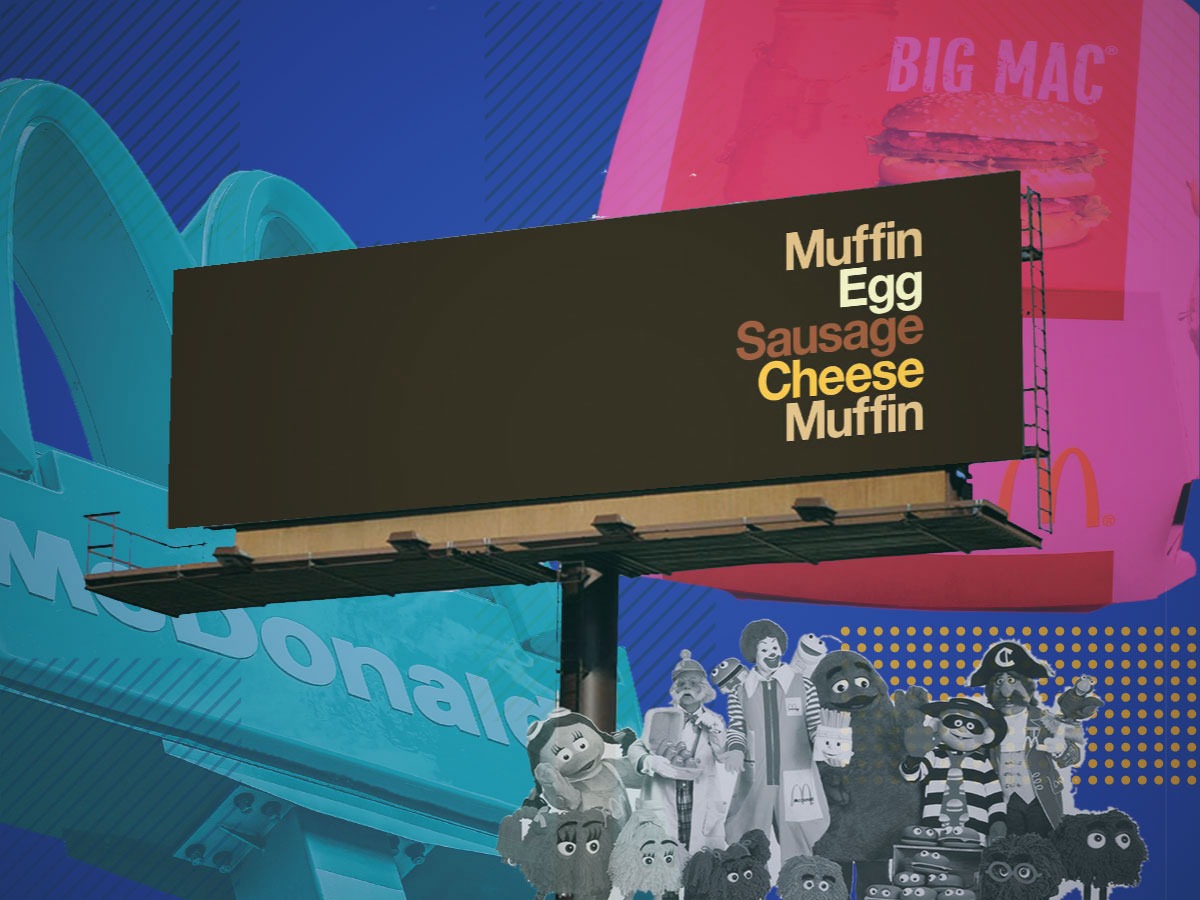

Earlier this month, McDonald’s launched an outdoor ad campaign that’s creating a lot of buzz for its minimalistic and, in some ways, non-existent branding approach. The ads simply list – in corresponding order and colors – the ingredients that compose some of the burger chain’s most well-known sandwiches without any other context such as the product name or even its brand. Instead of a logo or slogan, McDonald’s is betting that its sandwiches – and their ingredients – are so iconic that customers will instantly associate them with the brand. From any perspective, it’s a creative and confident way to connect with customers.
On LRW’s Pragmatic Brain Science® team, we call these powerful brand currencies (in this case, the ingredients) Iconic Assets. Iconic Assets are visual clues that rapidly and uniquely communicate brand messaging. These are the logos, mascots, or other pervasive imagery that make brands more relatable and identifiable to customers in our crowded and distraction-filled world. McDonald’s, for example, has traditionally used the Golden Arches, as well as mascots like Ronald McDonald or the Hamburglar, and packaging like the Big Mac “clamshell” container. Each of these assets carries a certain brand equity.
We can measure how well people recognize these equities by using an approach that separates asset strength into two components: recognition and distinctiveness. In this campaign, for example, it’s important for audiences to recognize not only that the ingredients are for the Big Mac, but also that they are NOT the ingredients for a Whopper. Speed of recognition and distinction is also a factor in determining asset strength. In this case, there’s a likelihood that exposure to one of these billboards will come while driving down the highway, so it’s important that the message makes a fast and familiar connection with the audience.
As with any campaign, there’s no guarantee that this promotional tactic will work out in McDonald’s favor. The company is banking on the potential that customers will be able to correctly identify their brand only by a list of its ingredients. It gets even more complicated when you consider that these ingredients are not exclusive to the McDonald’s brand; many other competitors use these same ingredients in their own sandwiches. The bottom-line risk is that this campaign could do a very good job at making people hungry for a burger – it just may not be a McDonald’s burger.
But as a successful multinational brand with a solid catalog of established iconic assets, it’s a risk that McDonald’s can afford to take. Given the strong history and experience that McDonald’s marketing team has under its belt, it’s highly likely that they have taken subtle steps to counterbalance the risk. Two elements stand out as intentional tactics to do just that: context and consistency. The “stacking” design provides some context that allows audiences to more easily visualize the sandwiches. And the consistent use of the same font (Helvetica) across the campaign helps audiences more readily identify those creatives as part of the same brand. Once audiences are able to establish the connection between the creative and the McDonald’s brand, they’ll instantly be able to make that same connection with any subsequent campaign impressions.
Iconic Assets play a critical role in taking brand recognition to a new level. As a first step, it’s important for brands to understand how their assets are perceived. Even if you aren’t embarking on a risky campaign or you don’t have McDonald’s name recognition, it’s important to invest in thorough research that will measure asset strength against strong benchmarks and a competitive set. Research also helps brands understand which assets to invest in, and which are falling behind. Once a successful Iconic Asset is identified, brands can convert it into tangible brand equity by placing it across multiple channels, which will only grow stronger with better recognition and a more defined distinction.
You must be logged in to post a comment.